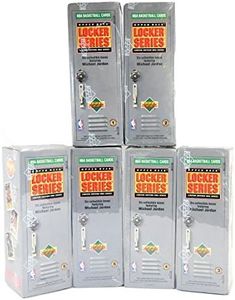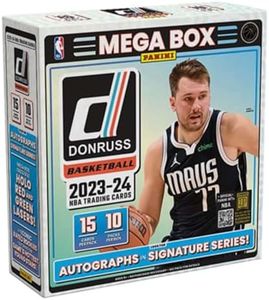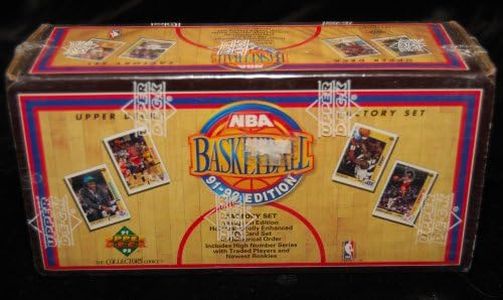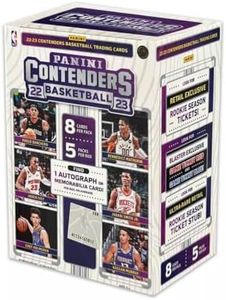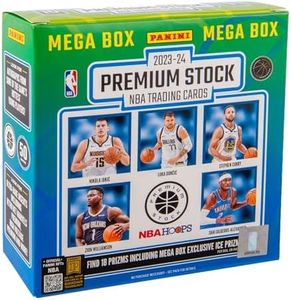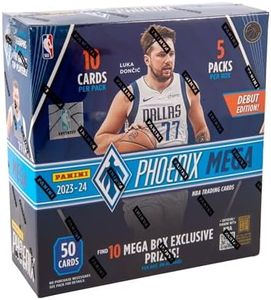We Use CookiesWe use cookies to enhance the security, performance,
functionality and for analytical and promotional activities. By continuing to browse this site you
are agreeing to our privacy policy
10 Best Basketball Cards
From leading brands and best sellers available on the web.Buying Guide for the Best Basketball Cards
Choosing the right basketball cards can be a deeply personal and exciting experience, whether you’re a new collector or looking to expand your collection. The world of basketball cards is vast, with various types, years, and special editions available. Your ideal pick should match your purpose—are you collecting for nostalgia, seeking investment, or simply enjoying the hobby? Think about the players, teams, or eras you love, and use that as your starting point. Understanding the main features of basketball cards can help you make informed decisions and ensure a fulfilling collecting journey.Card TypeThe type of the basketball card refers to its category, such as base cards, rookie cards, inserts, autographed cards, and memorabilia cards. Base cards are the standard cards found in most sets, while rookie cards are the first cards issued for a player in their debut season, often highly valued by collectors. Inserts are special themed cards included in packs and may have unique designs or features. Autographed cards contain a signature from the player, and memorabilia cards include a piece of game-used material like a jersey or ball. Collectors may choose based on personal preference: if you want a collection that appreciates in historical or potential value, rookie and autographed cards are good to consider; if you enjoy interesting designs or want to collect your favorite players, inserts and base cards might be more suitable for you.
Card ConditionCard condition refers to the physical state of the basketball card, graded on parameters like corners, edges, surface, and centering. Condition is crucial, as even a rare card loses value if it’s damaged or shows noticeable wear. The grading scale usually ranges from 'Poor' to 'Gem Mint', with higher grades translating to better quality and potentially higher worth. For display and personal enjoyment, average condition cards may suffice, but if you want long-term value or are considering selling the cards in the future, pursue cards in higher grades.
Year of IssueThe year of issue indicates when the card was produced. This is important because cards from certain years—such as when a player was a rookie or major historical seasons—can be more desirable. Vintage cards (from previous decades) are often valued by collectors for their rarity and nostalgia, while modern cards might offer more creative designs and special features. Older cards might require more care in terms of authenticity and condition. Pick the era that aligns with your interests: if you admire today’s stars, look for modern issues; if you cherish basketball history, consider vintage options.
BrandBrand refers to the company that produces the basketball cards, with some names consistently associated with high quality or special features. Established brands may offer better quality control, stronger resale value, or more widely recognized subsets. Certain brands might also hold official league licenses, impacting player images and logos on the cards. A brand’s reputation can be a guiding point if you wish to build a collection with wide recognition or long-term appeal, but personal enjoyment of the card design or set themes might matter more for some collectors.
Serial Numbering and Print RunSome basketball cards are serial-numbered, meaning there is a printed number that shows the card is part of a limited edition (for example, 15/100). Print run refers to how many copies of a particular card were made. Lower numbers usually mean greater scarcity and potentially higher value. This matters if exclusivity or rarity is important to you. If you love owning unique or hard-to-find items, look for cards with low serial numbers or print runs; if you’re more interested in collecting favorite players or sets regardless of rarity, this may be a less important factor.

